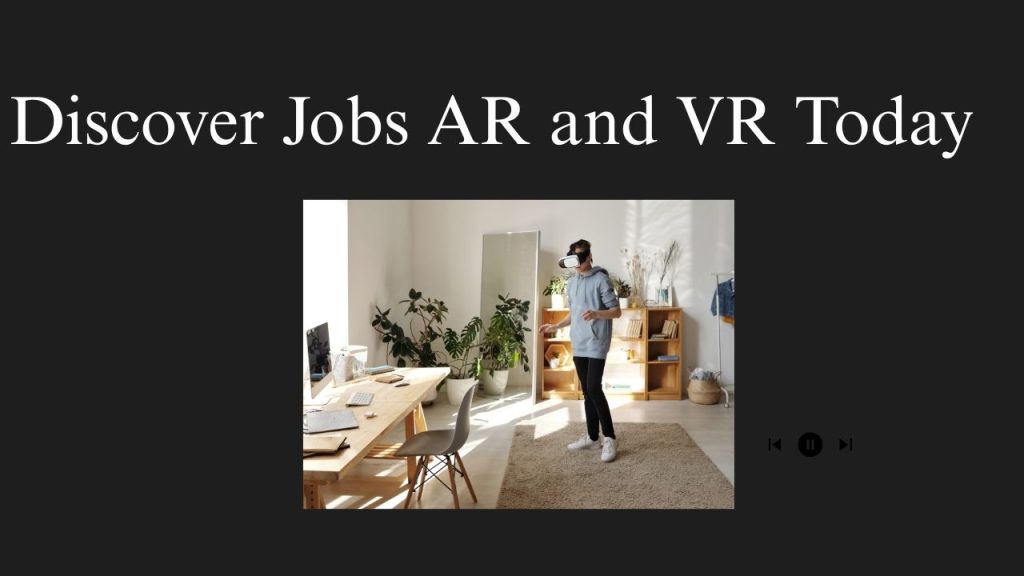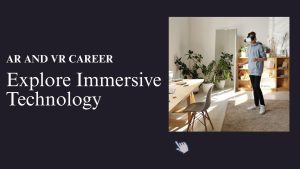Future-Proof Your Career: Top AR/VR Courses Students Must Take Now

Future-Proof Your Career: Top AR/VR Courses Students Must Take Now
Future-Proof Your Career : Top AR/VR Courses Students Must Take Now
Future-Proof Your Career , In an age where technology rapidly redefines human interaction and perception, Augmented Reality (AR) and Virtual Reality (VR) have emerged as two of the most transformative forces across industries. From gaming and entertainment to education, healthcare, architecture, and beyond, AR and VR are fundamentally reshaping how we experience and interact with the digital and physical world. For students preparing for careers in an evolving technological landscape, learning AR/VR development is no longer optional—it is essential.
What are AR and VR?
Augmented Reality (AR) overlays digital content onto the real world, enhancing the physical environment with images, sounds, or other data. Think of Pokémon Go or Snapchat filters—these are simple forms of AR.
Virtual Reality (VR), on the other hand, creates a fully immersive digital environment, blocking out the physical world and transporting users to a simulated space. VR is commonly used in gaming, simulations, and training programs, offering rich, 360-degree experiences through headsets like Oculus Rift, HTC Vive, or PlayStation VR.
Together, AR and VR fall under the broader umbrella of Extended Reality (XR), which is becoming increasingly integral to digital transformation.
Future-Proof Your Career: Why AR/VR Education Matters
1. Demand Across Industries
AR/VR technologies are not limited to entertainment—they are revolutionizing multiple sectors:
– Healthcare: Used in surgical simulations, therapy, and diagnostics.
– Education: Facilitates immersive learning experiences that improve retention and engagement.
– Architecture & Real Estate: Enables virtual walkthroughs and 3D modeling of buildings.
– Retail & E-Commerce: Powers virtual try-ons and interactive showrooms.
– Automotive & Aerospace: Used for virtual prototyping and training.
– Military & Defense: Enhances training realism through VR combat simulations.
As industries increasingly integrate immersive tech, the demand for AR/VR professionals is skyrocketing.
2. Job Market Growth
According to PwC, by 2030, 23 million jobs globally could be enhanced by AR/VR. The global AR/VR market is expected to reach **over $450 billion** by 2030 (Statista). Roles in development, design, research, and project management are growing annually.
Future-Proof Your Career: Key AR/VR Courses for Students
Future-Proof Your Career , To succeed in the AR/VR landscape, students should focus on a combination of technical skills, creative design, and user experience understanding. Below are essential courses:
1. AR/VR Development Fundamentals
What You’ll Learn:
– Introduction to AR/VR hardware and software
– Types of headsets and devices (e.g., Oculus, HoloLens)
– Basic XR programming concepts
– Sensor and tracking integration
Why It Matters:
This foundational course introduces students to how AR and VR systems work, preparing them for more advanced topics.
2. Unity and Unreal Engine Courses
Both Unity and Unreal Engine are leading platforms for developing AR and VR experiences.
- Unity (C# based)
– Used widely in AR applications and mobile XR projects
– Supports both ARKit (iOS) and ARCore (Android)
– Strong in 2D/3D content creation - Unreal Engine (C++/Blueprints)
– Known for high-fidelity visuals and realistic rendering
– Preferred in AAA gaming and architectural visualization
– Offers advanced lighting, physics, and cinematic tools
Why These Engines Matter:
Learning Unity or Unreal Engine equips students to develop real-world applications and immersive experiences, giving them industry-relevant, hands-on experience.
3. Immersive Experience Design
What You’ll Learn:
– UX/UI design principles in 3D spaces
– Interaction design for VR (gestures, controllers, eye-tracking)
– Spatial audio, haptics, and multisensory integration
– Storyboarding and prototyping for immersive media
Why It Matters:
Immersive experience design ensures that applications are not only functional but also intuitive, engaging, and user-centered. It’s especially critical in education, therapy, and marketing use cases.
4. 3D Modeling and Animation
Tools Covered:
– Blender
– Autodesk Maya
– Adobe Substance Painter
Skills Acquired:
– Character design
– Environment creation
– Texturing and rigging
– Animation for interaction
Why It Matters:
AR/VR heavily relies on 3D assets. Understanding how to model and animate objects gives students full control over content creation.
5. Programming for AR/VR
Languages:
– C#
– C++
– Python (for scripting and tool development)
– JavaScript/WebXR (for browser-based AR/VR)
Why It Matters: Behind every immersive experience is a codebase. Strong programming skills allow students to customize behaviors, optimize performance, and build scalable XR applications.
Future-Proof Your Career :Certifications and Online Platforms
Numerous institutions and platforms offer AR/VR training:
- Coursera (offered by universities like University of London, University of Michigan)
- Udemy (affordable, practical courses on Unity, Unreal, ARKit, and ARCore)
- edX (Harvard, MIT)
- XR Bootcamps (intensive, career-focused training)
- Meta Spark, Google ARCore, Apple RealityKit (platform-specific certifications)
Earning certifications not only enhances credibility but also demonstrates commitment to future employers.
Future-Proof Your Career: Career Opportunities for AR/VR Graduates
Popular Job Titles:
- AR/VR Developer
- Unity/Unreal Developer
- XR Designer
- Immersive Experience Designer
- 3D Artist for XR
- Technical Artist
- Product Manager (AR/VR)
- VR Simulation Engineer
- AR Interaction Designer
Industries Hiring AR/VR Experts:
- Gaming and Entertainment (e.g., EA, Sony, Epic Games)
- Tech Giants (e.g., Meta, Apple, Google, Microsoft)
- Startups and R&D Labs
- Medical and EdTech companies
- Industrial Simulation & Robotics

The Future of AR/VR: What Students Need to Know
1. The Rise of Spatial Computing
Spatial computing combines AR/VR, AI, and IoT to allow humans and machines to interact in 3D space. Apple’s Vision Pro, Microsoft’s HoloLens, and Meta Quest are all pushing this frontier. Students should learn how to develop applications that understand and respond to environments.
2. The Metaverse and Virtual Worlds
With ongoing investment in the Metaverse, there’s a growing need for:
- Virtual real estate designers
- 3D content creators
- Blockchain-integrated XR developers
- Digital economy strategists
Students should consider how immersive worlds will affect commerce, socialization, education, and identity.
3. AI Integration
Future AR/VR systems will be smarter. AI will drive personalization, predictive behaviors, and intelligent NPCs (non-player characters). Skills in machine learning and computer vision can enhance AR/VR application development.
Conclusion: AR/VR as a Career Catalyst
Future-Proof Your Career , As digital and physical worlds converge, AR and VR will continue to revolutionize how we learn, work, and play. Students who invest in AR/VR education are positioning themselves at the cutting edge of technology, where creativity meets computation. The combination of technical skill, creative design, and user empathy makes AR/VR not just a viable career path—but one of the most exciting and future-proof fields in tech.
Future-Proof Your Career ,For students seeking to stay ahead, the time to immerse themselves in AR/VR is now.







